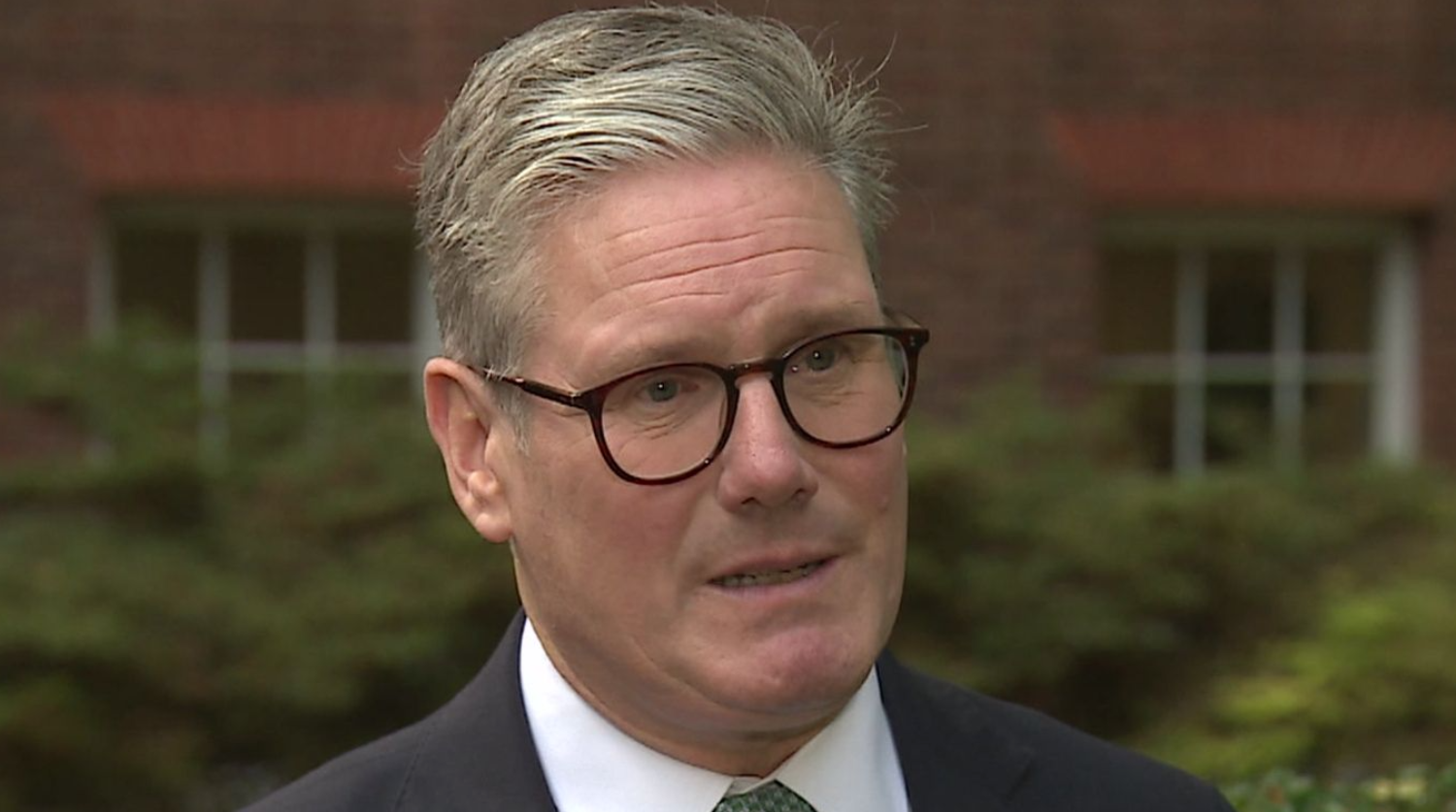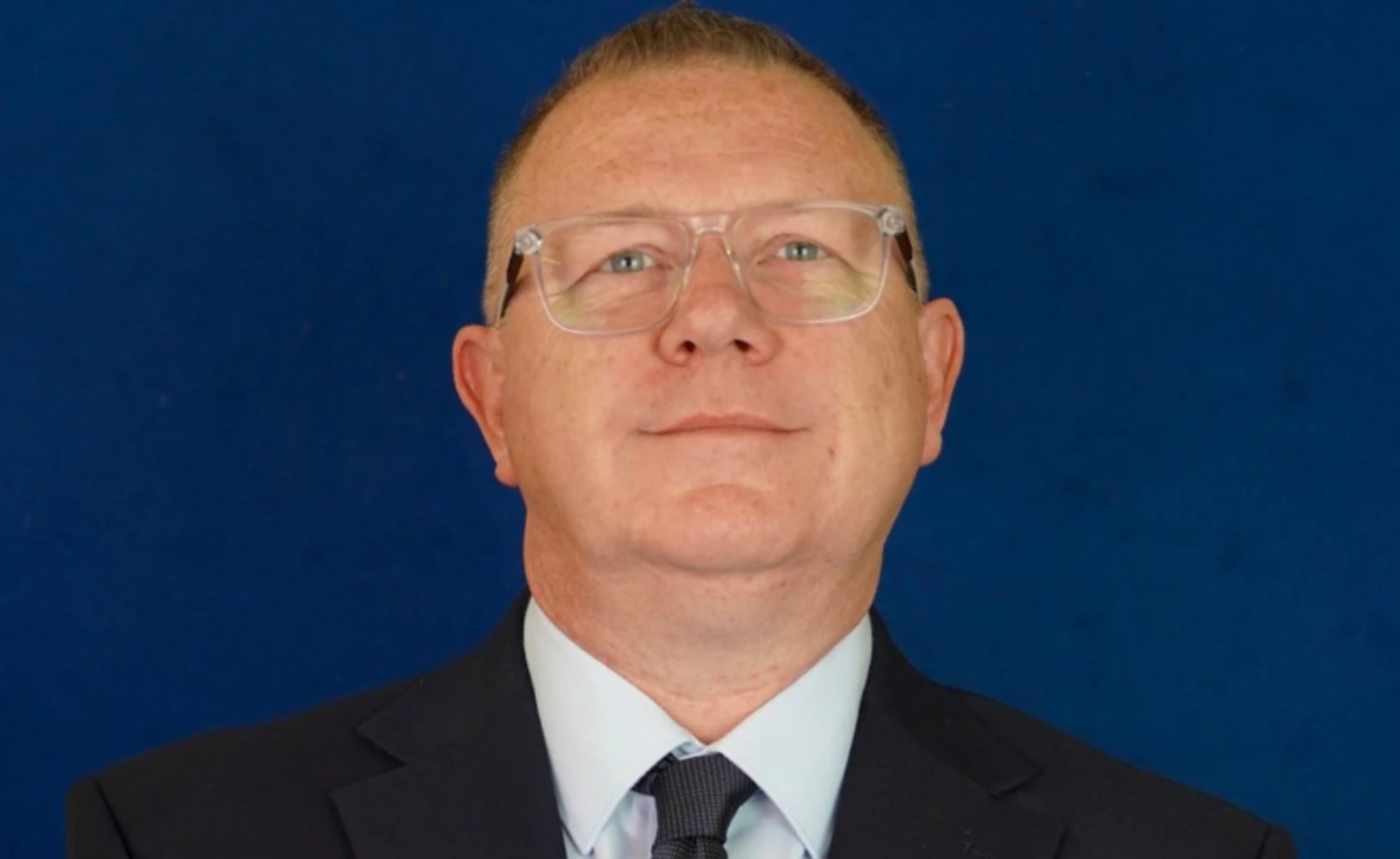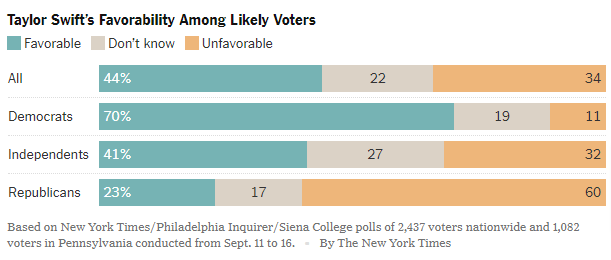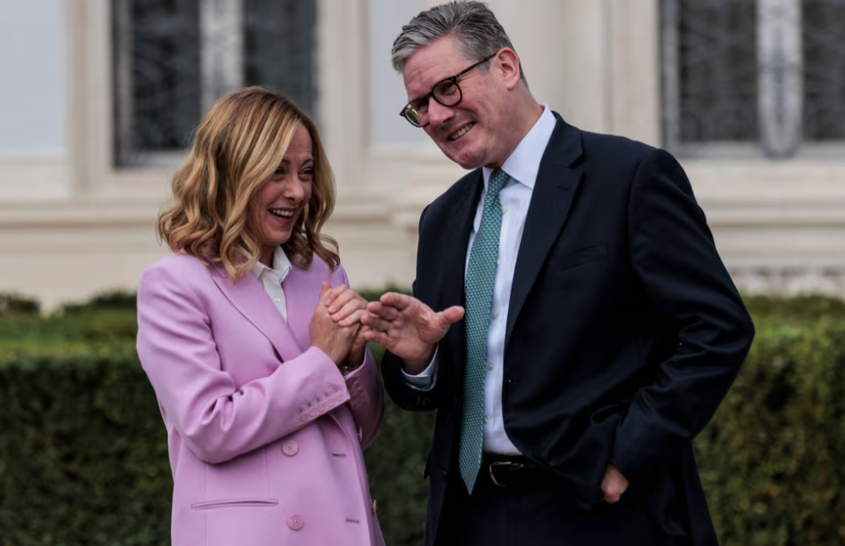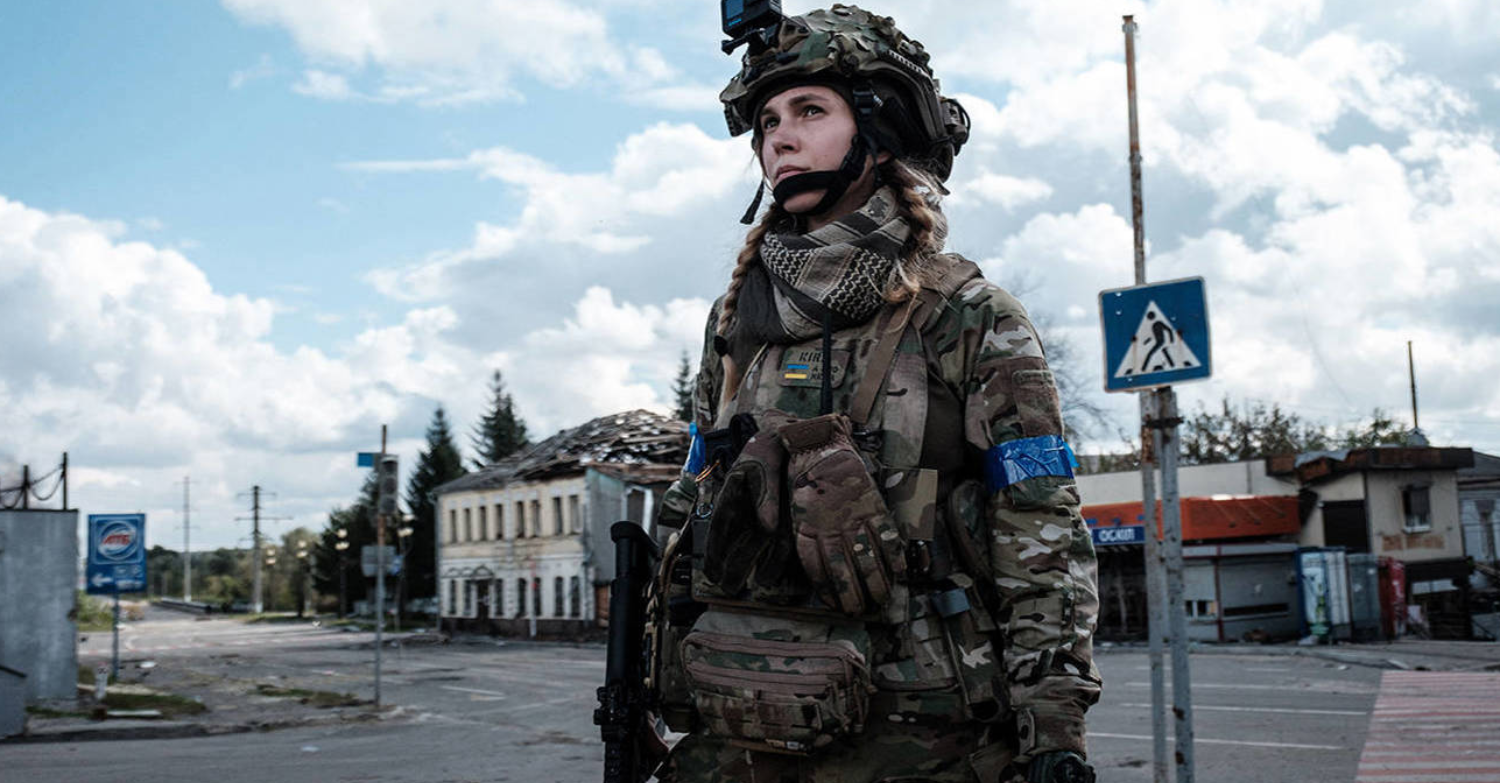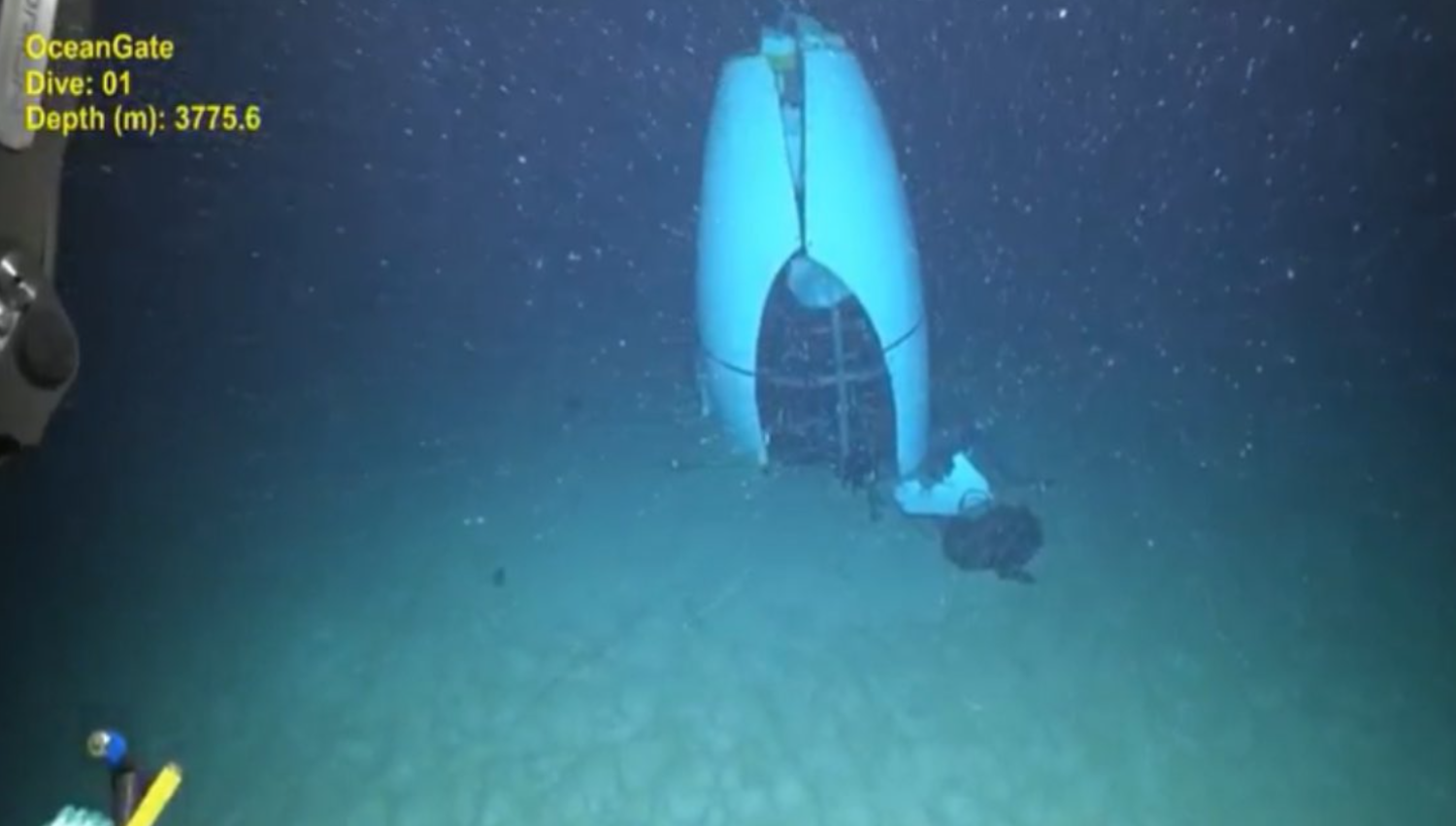-
Posts
10,807 -
Joined
-
Last visited
Content Type
Events
Forums
Downloads
Quizzes
Gallery
Blogs
Everything posted by Social Media
-
Sir Keir Starmer has firmly denied losing control of his government, even as tensions flare within Downing Street regarding Sue Gray's salary. The Prime Minister was compelled to defend his leadership after the revelation of Gray's £170,000 salary, which surpasses his own, sparked internal discord. The leak, seemingly from Whitehall, has raised suspicions of a politically motivated attempt to undermine Gray. Efforts are now underway to trace the source of the leak, as frustrations surrounding Gray's role as Starmer’s chief of staff mount. Gray, known for overseeing the "partygate" investigation into former Prime Minister Boris Johnson, has become a lightning rod for discontent among Labour advisers. The controversy threatens to cast a shadow over Labour's upcoming conference in Liverpool, the first in 15 years with the party in power rather than opposition. The conference, originally intended as a moment of celebration following Labour’s election victory, now risks being overshadowed by the internal strife surrounding Gray's salary and broader criticisms of Starmer's leadership. In a series of regional interviews ahead of the conference, Starmer was confronted with direct questions about his control over the situation and whether he had "lost grip" of his government. "I’m completely in control," Starmer stated. "I’m focused, and every day the message from me to the team is exactly the same: we have to deliver. We were elected on a big mandate to deliver change, and I am determined that we are going to do that." Pressed further on Gray’s salary, Starmer refused to engage in discussions about individual pay. "I’m not going to get into discussions about individual salaries of any members of my staff. I’m sure you wouldn’t expect me to," he responded to the BBC. However, concerns persist, particularly given that Gray’s pay was reportedly agreed upon outside formal procedures, raising questions about who initially proposed the figure. Signs of growing dissatisfaction within Starmer's team have emerged, with some advisers on lower salaries expressing frustration. One Labour adviser remarked, "Sue is seen as the driver behind a clampdown on both overall Spad [special adviser] numbers and pay, so there was a great deal of surprise when it emerged she was setting records for her own pay." This frustration has fueled calls for Starmer to take decisive action, with one ally urging him to "read the f------ riot act" to prevent further leaks. The situation has even led to speculation about future departures from the government. Simon Case, Britain’s top civil servant, is rumored to be preparing to resign following the conference season, with sources citing his strained relationship with Gray as a potential contributing factor. Beyond the Gray controversy, Starmer has faced scrutiny over his acceptance of donations and gifts, including more than £100,000 worth of free tickets and personal items since 2019. Defending his actions, the Prime Minister cited security concerns as the reason for accepting corporate tickets to Arsenal football matches, saying, "Since I’ve been Prime Minister, the security advice is don’t go in the stands, not least because it’ll cost a fortune to the taxpayer." However, critics have noted that Starmer received numerous free tickets during his tenure as opposition leader, before security concerns were a significant issue. Starmer has also defended donations for clothing and glasses, declaring, "The important thing in all of this is that we follow the rules, which is really important to me, and make the declarations so that everything is transparent." While some of Starmer’s supporters, like Baroness Harman, have suggested he could have handled the donations issue more gracefully, Harman acknowledged that it was "not a hanging offence." Instead, she proposed Starmer admit it was a misstep and move on. Amid all these controversies, Starmer has also acknowledged the difficulties faced by the NHS in Wales, which is under Labour control, describing the system as in "desperate" need of reform. With record-high waiting lists and persistently poor health outcomes, Starmer's comments reflect the challenges his party faces in delivering the change it promised during the election. As tensions over Sue Gray's salary, leadership questions, and donations persist, Starmer’s ability to steer his government through these crises will be tested, particularly as the Labour Party conference approaches. In his own words, however, Starmer remains confident: "I’m completely in control." Credit: Daily Telegraph 2024-09-21
-
Every day, Vladimir Putin’s forces launch relentless attacks on Ukrainian cities, targeting civilians and critical infrastructure, particularly as winter approaches. In response, Ukraine has proposed a logical and legally defensible course of action: it wants to use Western-supplied missiles to hit military targets in Russia—the very locations from which these devastating attacks originate. However, the United States, Ukraine’s most significant military supporter, has consistently denied this request, despite its legality and proportionality. Since the start of the conflict, the West has provided over $200 billion in aid, including weapons and financial support, to help Ukraine defend itself from Russian aggression, with another $100 billion expected. While this support has been vital, there has been a frustrating pattern. Time and again, Ukraine’s allies have delayed providing critical military equipment. Initially, they hesitated to supply tanks, then missiles, followed by anti-missile batteries, and more recently, fighter jets. As one Ukrainian front-line commander told *The Economist* during the summer, “They give us enough to survive, but not enough to win.” Next week, Ukrainian President Volodymyr Zelensky will meet U.S. President Joe Biden, where he is expected to renew his plea for permission to target Russian military positions directly. Both Britain and France have allowed their missiles, such as the Storm Shadow and SCALP, to be used against these targets. However, these weapons rely on American technology, and Washington has so far exercised a veto on their use in Russian territory. Germany has followed America’s lead, refusing to provide its own Taurus missiles. But Zelensky’s most urgent request is for permission to use the U.S.-supplied ATACMS missiles, which have a longer range and would provide Ukraine with a much-needed strategic advantage. While the Biden administration has expressed concerns over escalation, this fear is misplaced. Putin has threatened severe consequences if American missiles are used to strike Russian soil, claiming it would be equivalent to NATO entering the war. However, Russia is already pushing its offensive in Ukraine to the limits, short of deploying nuclear weapons. The real threat may lie in Russia retaliating by supporting adversarial forces in other regions, such as Iran or the Houthis, which could destabilize areas outside the immediate conflict. The West’s caution, particularly that of Biden and Germany’s Chancellor Olaf Scholz, only emboldens Putin. By holding back military capabilities, they inadvertently signal weakness and division within NATO. Putin sees these cracks and likely concludes that the West is tiring of the war and may soon seek a compromise. Peace talks might indeed begin, perhaps spurred by the U.S. election cycle, but to strengthen Ukraine’s position in such discussions, the West needs to fully back Zelensky’s efforts now. Allowing Ukraine to hit military targets inside Russia is not about expanding the war; it is about leveling the playing field and giving Ukraine the tools to defend itself. Restricting Ukraine's capabilities only rewards Russian recklessness and continues to put Ukrainian lives and sovereignty at risk. Mr. Biden’s reluctance to fully arm Ukraine for victory is a strategic miscalculation, one that should be urgently reconsidered. Credit: Economist 2024-09-21
- 1 reply
-
- 1
-

-
Ramzan Kadyrov, the authoritative leader of Russia's Chechen Republic, made a bold accusation against tech mogul Elon Musk on Thursday, claiming that Musk had remotely disabled a Tesla Cybertruck that Kadyrov said he had received from the billionaire. Kadyrov, who has held power in Chechnya for over 17 years, shared a video in August showcasing himself driving the electric vehicle, which notably had a machine gun mounted on its roof. Kadyrov stated that the truck had been gifted to him by Musk, although Musk swiftly denied the claim on his social media platform X, calling it a lie. "Now, recently, Musk remotely disabled the Cybertruck," Kadyrov wrote in a post on his Telegram account, indicating his displeasure. "That's not a nice thing for Elon Musk to do. He gives expensive gifts from the bottom of his heart and then remotely switches them off," the Chechen leader added, expressing frustration over what he perceived as an unjust action. The Tesla Cybertruck, first introduced by the American carmaker Tesla in 2019, is an electric pick-up truck that only began production recently. Its futuristic design and off-road capabilities have made it a standout in the electric vehicle market. In a surprising claim, Kadyrov alleged that the vehicle had been actively used in combat, specifically in Ukraine. According to the Chechen leader, the Cybertruck "performed admirably" in the conflict. No evidence has been provided to substantiate these claims, and it remains unclear how the vehicle was used or how it allegedly contributed to the war efforts. Kadyrov, the son of a former rebel leader, has shifted from insurgency to being one of Russian President Vladimir Putin's most loyal supporters. Often referring to himself as Putin's "footsoldier," Kadyrov has played an increasingly prominent role in Russian politics and military endeavors. He has openly declared his commitment to assisting the Kremlin in its war against Ukraine and claims to have sent thousands of Chechen troops to support Russia's military offensive. This episode, involving one of the world’s most well-known tech entrepreneurs and a controversial political figure, underscores the tensions between Russia and the West. While Musk has frequently been a public figure in global affairs due to his business ventures, including electric cars and space exploration, this peculiar allegation of disabling a combat-used Cybertruck introduces a new and unexpected twist to his ever-growing list of controversies. Credit: Bloomberg 2024-09-21
-
Brent Carter, a Labour councillor from Merthyr Tydfil, South Wales, has been appointed the leader of the borough council, despite a scandalous incident from his past. Nine years ago, in 2015, Carter was found “covered in lipstick” during a police raid at an illegal sex den in the town’s Regent Street. The revelation of this incident has sparked fresh debate about his leadership and his fitness for the role. The incident came to light during the trial of Leon Hall, who was running the brothel. In May 2015, Carter had only been in the establishment for a few minutes when police entered the property. Inside, officers found not only Carter but also packets of condoms and lubricating gel scattered across the floor. Hall, the man behind the operation, was later given a 10-month suspended sentence for his involvement in running the illegal brothel, which was staffed by Eastern European women. Despite the evidence, Carter was never arrested, and he maintained his position as a councillor, a role he has held since 2008. Although Carter was reported to the Public Service Ombudsman for violating the council’s code of conduct, the ombudsman ruled there was no evidence that he had brought the council into disrepute—only that he had caused harm to his own reputation. This allowed Carter to remain in his position and avoid any official penalties for his actions. The Labour councillor’s rise to leader of the Merthyr Tydfil Borough Council follows a shift in local political dynamics, with independent councillors losing their majority after a recent by-election. However, Carter’s promotion has reignited concerns in the local community. Simon Ryan, a 57-year-old taxi driver and local resident, expressed his frustration, stating, “How will people respect the town when its leader has acted in this way? He was caught red-handed in a brothel—people can’t have faith in a man like that. We will be the laughing stock of the Valleys.” Ryan’s sentiments reflect those of many who feel that Carter’s past indiscretion is a stain on the town’s reputation, which had recently been improving. Despite the backlash, Carter has attempted to address these concerns publicly. In a statement issued by the council, he acknowledged the incident and its impact on the community. “I appreciate the concern raised by some members of the community regarding my past. As the newly elected Leader of the Council, I understand the importance of upholding the values and reputation of our town as I have lived in Merthyr all my life; and I can honestly say that I wouldn’t want to live anywhere else,” he said. Carter went on to thank his family, friends, and constituents for their continued support since 2008, adding that their trust in him has been “overwhelming.” He further reassured the public that he has learned from his past experiences and is now focused on serving the community with “integrity and dedication.” Carter emphasized that his commitment to the town remains strong and that he has worked hard to evolve as a person since the 2015 incident. Nevertheless, for some, the question remains whether such a controversial figure can effectively lead and restore confidence in a community that has already faced significant challenges. As the leader of the council, Carter now faces the task of moving forward while grappling with the lingering shadows of his past. Whether the town will fully embrace his leadership remains to be seen. Credit: Daily Telegraph 2024-09-21
-
A recent New York Times poll suggests that Taylor Swift could hold her own if she ever decided to enter the political arena, specifically in a race against political heavyweights like Donald Trump and Kamala Harris. The pop superstar was pitted against the two political figures in a nationwide survey to gauge her appeal among voters, and the results were unexpectedly strong. According to the poll, Swift received a 44 percent favorability rating among likely voters, which was just below Trump's 47 percent and Harris's 48 percent. What was even more striking, however, was how much better Swift performed in terms of unfavorable ratings. Only 34 percent of respondents had an unfavorable view of Swift, compared to Trump’s 51 percent and Harris’s 49 percent. This shows a more positive public perception of Swift, with many viewing her as a less polarizing figure compared to the two politicians. Swift's support was notably strong among Democrats, with 70 percent viewing her favorably. This wasn’t too surprising given Swift’s open endorsement of Kamala Harris following the presidential debate. In contrast, only 23 percent of Republicans had a favorable opinion of Swift, while 60 percent viewed her unfavorably. Among Democrats, a mere 11 percent had negative views of the pop star. Independents, who often play a crucial role in elections, were also more favorable toward Swift than many might have anticipated. Forty-one percent of independents viewed her positively, while 32 percent had unfavorable opinions. The poll, which was conducted by The New York Times, Philadelphia Inquirer, and Siena College between September 11 and 16, took place before Swift publicly announced her endorsement of Harris. On Instagram, Swift praised Harris for being a strong leader who fights for causes she deeply believes in. “She fights for the rights and causes I believe need a warrior to champion them. I think she is a steady-handed, gifted leader and I believe we can accomplish so much more in this country if we are led by calm and not chaos,” Swift wrote in her endorsement. Unsurprisingly, the endorsement didn’t sit well with Donald Trump. In a reaction posted on his platform, Truth Social, Trump stated, “I HATE TAYLOR SWIFT!” Despite the heated political environment, Swift still managed to find a good chunk of support. However, 22 percent of voters didn’t seem too concerned with the pop star either way, with many of that group being males over the age of 65, who either didn’t know much about her or didn’t care. Though Taylor Swift has never expressed any real interest in running for political office, her massive influence over her fan base has led some to imagine what might happen if she did. Her song lyrics from "The 1" could reflect the thoughts of her most ardent supporters: “It would have been sweet if it could’ve been me.” Credit: Daily Beast 2024-09-21
-

Trump vs. Taylor Swift: A Battle He’s Bound to Lose
Social Media replied to Social Media's topic in World News
A post attempting to derail the topic into, Gaza, Jews, History and Hamas has been removed. Please stop now. -
Mark Robinson, the Republican nominee for governor of North Carolina, has come under scrutiny after an investigation by CNN revealed a series of inflammatory and disturbing comments made on a pornography website over a decade ago. These comments, which Robinson denies making, were posted under the username "minisoldr" and range from racially offensive remarks to derogatory statements about civil rights leaders and sexually explicit content. Robinson, who currently serves as North Carolina’s lieutenant governor, was found to have used his full name and a shared email address on the message board of "Nude Africa," a pornographic website. His comments, which spanned from 2008 to 2012, included him referring to himself as a "black NAZI!" and expressing support for the reinstatement of slavery. Robinson also reportedly shared graphic sexual memories and discussed his enjoyment of transgender pornography, which starkly contrasts his current public stance against transgender rights. In one of the archived messages, Robinson described his sexual arousal from spying on women showering at a gym as a 14-year-old. He wrote, “I sat there for about an hour and watched as several girls came in and showered. Ahhhh memories!!!!” Robinson, who publicly supports a conservative stance on gender identity and sexuality, also wrote about his attraction to transgender pornography, saying, “I like watching tranny on girl porn! That’s f*cking hot!” Robinson’s political history has been marked by controversy, including his outspoken opposition to transgender rights and his support for strict abortion laws. Publicly, he has argued that people should use bathrooms that align with the gender assigned at birth, stating at a rally earlier this year, “We’re going to protect our women.” However, his online comments as "minisoldr" present a much different persona, one that has drawn criticism from various quarters. If elected, Robinson would become North Carolina’s first Black governor, but his path to victory is uncertain. He faces strong competition from Democratic candidate Josh Stein, the state's attorney general. Despite endorsements from prominent figures such as former President Donald Trump, recent polls suggest that Robinson is trailing behind Stein in the race. Robinson’s past remarks, including offensive comments about civil rights leaders like Martin Luther King Jr. and antisemitic and homophobic slurs, have only added to the challenges he faces in his bid for governor. His repeated use of derogatory language toward Black, Jewish, and Muslim individuals has drawn condemnation from many, further complicating his campaign. Credit: CNN 2024-09-20
-
After years of dedicated advocacy from animal rights groups, Congress, and pet lovers across the country, the Department of Veterans Affairs (VA) has announced a pivotal shift in its research practices. The VA confirmed that it has ceased all feline testing and is ending research involving sensitive species, including cats, dogs, and non-human primates. This marks a significant achievement for those who have long campaigned to end government-funded animal experiments they deemed cruel and outdated. However, this change did not happen overnight. The VA's history of conducting painful and lethal experiments on cats and dogs stretches back to at least the 1950s. During this era, medical practices like lobotomies were commonplace, and doctors even endorsed cigarette smoking. Though science has evolved dramatically since then, the VA's research practices remained steeped in the past for decades. In 2016, when the White Coat Waste Project first uncovered the VA's brutal experiments, such as injecting latex into puppies' arteries to induce heart attacks and severing kittens' spinal cords, the agency justified these actions as “necessary” and “essential” despite the availability of modern alternatives like AI models and organs-on-chips. Pressure against the VA’s outdated methods came from all sides, including Republicans, Democrats, veterans groups, and animal rights advocates. Legislation was proposed and enacted to restrict funding for the VA’s research on dogs and cats. Alongside new public reporting requirements, lawmakers repeatedly pressed the agency to phase out these practices. An independent review found that the VA’s dog experiments were unnecessary, and a VA Inspector General report revealed that the agency had illegally funded and conducted some of these tests. By 2022, progress had been made when the VA ended its harmful dog testing program. Yet the agency soon proposed a controversial experiment on cats involving outdated and painful procedures. This plan faced immediate backlash from Congress, the media, and concerned citizens who flooded the VA with emails and calls. Eventually, the VA scrapped the cat experiment, acknowledging that while the cat model was once considered the standard, "more recent standards allow the goals of this project to be achieved with other approaches." The bipartisan nature of this victory is notable. More than 125 lawmakers from both parties supported efforts to end these tests, and VA secretaries under both the Trump and Biden administrations endorsed initiatives to reduce painful experiments on dogs and cats. "When this project was proposed…the cat model was the accepted standard…More recent standards allow the goals of this project to be achieved with other approaches," the VA stated. Although this is a win for animal advocates, the fight is far from over. Activists are now targeting similar harmful experiments at the Department of Defense, National Institutes of Health, and the U.S. Department of Agriculture. Their goal is to ensure that taxpayer dollars are not funding abusive animal testing practices. While progress has been made, setbacks continue to remind advocates of the need for vigilance. The Environmental Protection Agency had introduced a plan to restrict animal testing further, only to later abandon it. This highlights the importance of sustained bipartisan efforts to prioritize animal welfare in research settings, regardless of political leadership. In a country where two-thirds of households have pets and many regard their dogs and cats as family, the idea of taxpayer dollars funding painful experiments on these animals feels “un-American.” But as animal advocates reflect on this victory, they remain determined to continue their efforts to ensure the unnecessary abuse of pets in laboratories becomes a thing of the past. Credit: The Hill 2024-09-20
-
An Israeli citizen has been arrested on suspicion of being involved in an Iranian-backed plot to assassinate Prime Minister Benjamin Netanyahu, along with other top officials, according to Israeli security services. The suspect, whose identity has not been made public, was reportedly smuggled twice into Iran, where he received payment to undertake specific "missions" on behalf of the Iranian regime. In a joint statement, Israeli police and domestic intelligence services revealed that the man, a businessman, had been living in Turkey and had connections there who facilitated his covert trips to Iran. The announcement comes during a period of heightened tensions between Iran and Israel, long-time adversaries in the region. The suspect was arrested last month after allegedly plotting to target Netanyahu, as well as Israel’s defense minister and the head of an unnamed security agency. The statement explained that earlier this year, in April and May, the suspect traveled twice to the Turkish city of Samandag, where he met with a wealthy Iranian businessman named Eddie. Eddie, who has close ties to Iranian officials, had difficulty leaving Iran on both occasions, which led to the Israeli suspect being smuggled from Turkey into Iran. Once inside the country, the Israeli man met both Eddie and an "Iranian security operative." According to the security services, Eddie directed the Israeli to carry out various tasks for Iran, which included more than just assassination plans. "He was asked to carry out various security missions within Israel for the Iranian regime," the statement revealed. These tasks reportedly included the transfer of money or a weapon, taking photographs of crowded areas in Israel, and sending these images to Iranian agents. Additionally, the suspect was instructed to threaten other Israeli citizens who had been recruited by Iran but had not followed through on their assignments. The Israeli government has not disclosed further details about the suspect or his connections, but the alleged assassination plot has drawn significant attention due to the ongoing hostilities between Israel and Iran. Both countries have engaged in covert operations, cyberattacks, and military confrontations over the years, often escalating tensions in the Middle East. This arrest underscores the ongoing risks posed by international espionage and assassination attempts, especially involving high-profile targets like Netanyahu. While the plot appears to have been foiled before any harm could be done, the incident highlights the persistent threat posed by Iran to Israeli leadership and security. Credit: BBC 2024-09-20
- 1 reply
-
- 1
-

-
Five women have come forward accusing the former Harrods owner, Mohamed Al Fayed, of rape, revealing a harrowing history of abuse during his ownership of the luxury London department store. These allegations, corroborated by over 20 former female employees, shed light on the sexual misconduct Fayed allegedly carried out at various locations including London, Paris, St Tropez, and Abu Dhabi. Fayed, who passed away last year at the age of 94, is described by many of the victims as a sexual predator. In a BBC documentary and podcast, Al-Fayed: Predator at Harrods, disturbing details emerge of how the store, under Fayed's control, not only ignored but allegedly covered up these claims. Harrods’ current owners have expressed their shock, stating they were “utterly appalled” by the accusations and sincerely apologized to the victims. Bruce Drummond, a barrister representing several of the women, described the culture under Fayed’s reign as a “spider’s web of corruption and abuse.” One of the victims recounts the traumatic experience at Fayed’s Park Lane apartment. “I made it obvious that I didn't want that to happen. I did not give consent. I just wanted it to be over,” she said, recalling the event with pain. Another woman, who was a teenager at the time, echoed similar feelings, describing Fayed as a “monster, a sexual predator with no moral compass.” She added that Harrods' staff were his “playthings,” living in constant fear of him. While Fayed faced some allegations during his lifetime, the extent and severity of these claims, including multiple accusations of rape, are only now being revealed. BBC’s investigation suggests that many more women may have been assaulted during his ownership of Harrods. Some of the women, including Sophia, a former personal assistant to Fayed from 1988 to 1991, are still struggling with the trauma. “He was vile,” she said, stating that she was sexually assaulted multiple times. She feels angered that people may remember him fondly, adding, “That makes me angry, people shouldn't remember him like that. It's not how he was.” The testimonies of these women paint a picture of systemic abuse. Young female employees who caught Fayed’s attention were reportedly promoted to work in his offices, where many were assaulted. The assaults took place not only in Harrods’ offices but also in his London apartment and during foreign trips. Some of the most disturbing incidents are said to have occurred in Paris, at the Ritz hotel and his Villa Windsor property, where former staff recall a sense of helplessness. “We all watched each other walk through that door thinking, ‘you poor girl, it's you today’ and feeling utterly powerless to stop it,” recalled one woman. One of the survivors, Rachel, described how Fayed raped her at his Park Lane apartment. “I remember feeling his body on me, the weight of him. Just hearing him make these noises. And… just going somewhere else in my head. He raped me.” Rachel is one of several women who say they were violated at this location, a site described as heavily secured and monitored by Harrods staff. Former staff members have come forward to confirm that Fayed’s behavior was an “open secret” at Harrods. Tony Leeming, a department manager, stated, “It wasn’t even a secret. And I think if I knew, everybody knew.” Eamon Coyle, the ex-deputy director of security, confirmed that security staff were aware of Fayed’s inappropriate interest in young women. Adding to this, allegations of phone tapping and hidden cameras have surfaced, contributing to the fear that prevented many women from speaking out earlier. Many of these women were also subjected to invasive sexual health checks under the guise of employee benefits, but the results were never shared with them. “There is no benefit to anybody knowing what my sexual health is, unless you're planning to sleep with somebody,” one woman remarked, reflecting on how chilling these procedures now seem. Though some attempts were made to expose Fayed’s behavior during his lifetime, including investigations by Vanity Fair, ITV’s The Big Story, and Channel 4’s Dispatches, none resulted in significant action. It wasn’t until after Fayed’s death in 2022 that many of the survivors felt able to come forward publicly. The BBC documentary reveals that several women were forced to sign non-disclosure agreements as part of settlements in the past, but Harrods’ current owners are no longer requiring these agreements. Credit: BBC 2024-09-20
-
Israel's ongoing conflict saw a significant development when walkie-talkie bomb attacks in Lebanon prompted Defense Minister Yoav Gallant to announce a strategic shift towards the northern front, emphasizing Hezbollah as the new focus of military operations. This shift marks a new phase in the 11-month war that followed the Hamas attacks on October 7, last year. As Gallant explained, Israel is diverting military resources towards the Lebanese border. "The center of gravity is shifting to the north, by diverting resources and forces [there]," he stated, underscoring the new stage of the war and the challenges ahead. "It requires courage, determination, and perseverance from us," he added, signaling that Israel's attention is now firmly fixed on Hezbollah, a formidable adversary. While Gallant's remarks suggest a potential escalation, experts warn of the risks associated with a full-scale Israeli assault on Hezbollah. Such an operation could come with significant political ramifications, and many believe the United States may discourage Israel from launching an invasion. Despite this, Israel has reiterated its goal of returning approximately 60,000 evacuees to their homes in the north as part of its military objectives. Israeli Prime Minister Benjamin Netanyahu, in televised remarks, did not directly address the bombings or the possibility of war but reassured residents about their safety. "I already said that we would return the residents of the north securely to their homes and that is exactly what we will do," he asserted. The leader of Hezbollah, Hassan Nasrallah, is expected to respond to these developments in a televised speech, signaling that tensions between the two sides could escalate further. Hezbollah has also made its stance clear, with Seyed Hashem Safiuddin, head of Hezbollah's executive council, affirming that injured fighters would soon return to the frontlines. "These attacks will certainly be uniquely punished," Safiuddin warned, adding, "Revenge is inevitable." The exchange of rocket fire between Hezbollah and Israel has persisted since Israel retaliated against Gaza following the Hamas-led massacre, though the conflict has not yet escalated into a full-scale war. The recent wave of explosions in Lebanon involved remote-controlled devices, including radios, security doors, and solar power systems, detonated simultaneously across the country. This marked the second such attack in just two days. According to reports, Hezbollah operatives had become suspicious of the devices shortly before the blasts, which may have led the Israelis to act earlier than planned. "It was a use-it-or-lose-it moment," said one U.S. official to Axios. Some reports suggest that these explosives were intended for use only in the event of all-out war, raising concerns that Israel may now consider a ground invasion to prevent Hezbollah from regrouping after the shock of the attack. Israel's military actions in the north have already begun to intensify. The Israel Defense Forces redeployed its elite 98th division from Gaza to the Lebanese border and conducted several drills aimed at preparing for operations on northern terrain, including simulations of enemy incursions and battlefield evacuations. Major General Ori Gordin, commander of Israel's northern forces, expressed confidence in the readiness of his troops, stating they were at "peak readiness" and determined to "change the security reality as soon as possible." With Hezbollah's reputation as a more capable adversary than Hamas, this shift in focus has raised concerns. The Iranian-backed Shia group reportedly possesses between 100,000 and 150,000 rockets, which could be unleashed in the event of a full-scale conflict with Israel. As tensions rise, the prospect of a broader, more destructive confrontation looms over the region. Credit: Daily Telegraph 2024-09-20
-
In June 2024, Giorgia Meloni found herself at the center of global attention as she hosted the G7 summit in Apulia, southern Italy. Her vibrant performance, dancing to the traditional pizzica, symbolized the confidence of a rising political leader. Just days after a strong showing in the European elections, Meloni was emerging as one of Europe’s most prominent figures, a remarkable transformation for a politician who was once relegated to the fringes as the head of the small right-wing party, Brothers of Italy. Meloni's journey to respectability has been nothing short of impressive, winning over centrist parties in the EU and even receiving a warm welcome at the White House from Joe Biden. Her ability to navigate the complexities of European politics, while maintaining close ties to controversial leaders like Hungary’s Viktor Orbán, has baffled critics. Many, like author Roberto Saviano, labeled her a threat, calling her a “danger to Italy and the rest of Europe.” Yet Meloni has displayed a pragmatic streak, working with European Commission President Ursula von der Leyen and supporting Ukraine in its conflict with Russia—positions that deviate from the traditional pro-Putin sentiments of Europe’s right. Despite her success on the international stage, Meloni’s domestic challenges have exposed the undercurrents of her party’s origins. A scandal involving members of her party’s youth wing chanting fascist slogans and making racist remarks forced her to confront the lingering associations with Italy’s fascist past. She quickly condemned the behavior, calling it “completely incompatible” with Brothers of Italy’s platform. Critics like Giuseppe Provenzano of the Democratic Party accused her of hiding the true face of her party. However, others, including opposition member Roberto Giachetti, rejected the notion that Meloni herself was fascist. The ambiguity in Meloni’s politics, often referred to as “doppiezza” or doubleness, is a defining feature of her leadership. On one hand, she presents herself as a moderate on economic and foreign policy, yet on social issues like immigration and family policy, she strikes a more conservative, right-wing tone. Her campaign slogan, “We defend God, Fatherland, and Family,” echoes Italy’s fascist past, but she insists it also harkens back to Giuseppe Mazzini, a hero of Italy’s unification. Rather than focus on whether Meloni’s party is truly fascist, it may be more relevant to view her as a populist leader responding to modern challenges. She has tapped into widespread fears about immigration, global capitalism, and secularism, positioning herself as a defender of Italy’s traditional values. This appeal resonated with international leaders, such as UK Prime Minister Keir Starmer, who sought her advice on immigration policy despite objections from within his own Labour Party. Fabrizio Barca, an economist, situates Meloni within a broader neo-authoritarian trend sweeping Europe. He argues that decades of neoliberal policies, which have hollowed out social protections and exacerbated inequality, have created fertile ground for strong, charismatic leaders. Meloni’s success, much like Donald Trump’s in the U.S., lies in her ability to defend traditional identities rather than disrupt the economic status quo. Despite the controversies surrounding her, Meloni remains a skilled and disciplined politician. Her rise to power has been strategic, with Brothers of Italy growing from a minor player with just 2% of the vote to becoming Italy’s largest party with 26%. Unlike other right-wing leaders, she has carefully distanced herself from extreme factions such as Alternative for Germany, positioning herself as a mainstream conservative. Meloni’s political persona is built on a duality that resonates with different audiences. To the EU and international community, she is a moderate; on the campaign trail, she is a populist firebrand. She has cultivated an image of a tough yet relatable leader, emphasizing her working-class roots and using her first name, Giorgia, to connect with voters. As she wrote in her autobiography, “I am proud of being a woman of the people.” Meloni’s life story reflects her political complexity. Raised by a single mother in a working-class neighborhood, she was shaped by her early involvement with the far-right Movimento Sociale Italiano (MSI). Although she has distanced herself from the party’s fascist roots, she still carries with her the experiences of being part of a counterculture that felt embattled by Italy’s dominant left-wing politics. Ultimately, the question of whether Meloni is a closet fascist or a conservative democrat may not matter. What is clear is that she is a politician adept at navigating the shifting tides of modern politics, both in Italy and on the global stage. As she continues to shape her image, the world will watch closely to see which version of Giorgia Meloni emerges next. Credit: The Guardian 2024-09-20
-
For the first time since 1996, the International Brotherhood of Teamsters, one of the most influential labor unions in America, has refrained from endorsing a U.S. presidential candidate. This decision marks a significant moment in the political landscape, especially as the union, which represents 1.3 million members across the U.S. and Canada, noted it received "few commitments on top Teamsters issues" from either Kamala Harris, the Democratic nominee, or Donald Trump, the Republican nominee. The union’s internal polling found "no definitive support" for either candidate, though two recent polls indicated a leaning toward Trump. This lack of endorsement presents a challenge for Harris, particularly as she seeks to win over working-class voters in critical swing states like Pennsylvania, Michigan, and Wisconsin. A potential endorsement could have rallied thousands of Teamsters to support her campaign in these key battlegrounds. Shortly after the announcement, several regional councils within the Teamsters, representing more than half a million members in states like Michigan, Wisconsin, Nevada, and California, announced their endorsement of Harris. The Harris campaign emphasized its broad support from "the overwhelming majority of organized labor" and highlighted the backing of many local Teamsters groups. Campaign spokesperson Lauren Hitt pointed out, "While Donald Trump says striking workers should be fired, Vice-President Harris has literally walked the picket line and stood strong with organized labor for her entire career." The union's membership, which includes a wide range of workers such as freight drivers, warehouse employees, and airline pilots, is known for its political diversity. Since taking over the union’s executive board in 2022, General President Sean O'Brien has sought to build relationships with both Republicans and Democrats. He has reached out to populist Republicans like Senators Josh Hawley and JD Vance, the latter now being Trump’s running mate. O’Brien’s efforts to court the Republican Party included a private meeting with Trump at his Mar-a-Lago estate in January, followed by a roundtable with the union’s board in Washington, D.C. After the meeting, Trump expressed confidence, saying he believed he had a "good shot" at earning the union’s endorsement. The Teamsters board also met with President Joe Biden before he withdrew from the race, as well as with third-party candidates Robert F. Kennedy Jr. and Cornel West. In a surprising move, the union made financial contributions to both the Democratic and Republican National Conventions earlier this year, marking its first donation to Republican candidates in years. O'Brien even delivered a prime-time address at the Republican National Convention (RNC), where he called Trump "one tough SOB," though he stopped short of endorsing him. Despite the friendly overtures, O’Brien later criticized Trump and campaign surrogate Elon Musk for suggesting that workers who strike should be fired. After speaking at the RNC, O’Brien was not invited to address the Democratic convention. Instead, rank-and-file members of the union represented the Teamsters at the event. Some Teamsters members, including the National Black Caucus and six local unions, have openly criticized O’Brien’s outreach to the right, choosing to endorse Harris independently. In a last-minute effort to win the union’s endorsement, Harris met with the Teamsters board earlier this week in a long-delayed roundtable. The New York Times described the meeting as "sometimes tense," though a union spokesperson disputed that characterization. During the conversation, Harris told the board, “I’m confident I’m going to win this. I want your endorsement, but if I don’t get it, I will treat you exactly as if I had gotten your endorsement.” The Teamsters' decision to stay neutral in the current election is a major blow to Harris and leaves Trump with a more divided labor landscape than expected. Credit: BBC 2024-09-20
-
Donald Trump's recent outburst declaring "I HATE TAYLOR SWIFT" is more than just an ill-advised comment; it’s an unwinnable fight against a cultural force too powerful to be easily dismissed. Trump has never shied away from picking fights, but this one, involving the world’s biggest pop star, seems destined to backfire. So, why would he and his supporters provoke such an influential figure? The answer may lie in Trump's keen awareness of how deeply intertwined culture and politics are. Trump, himself a former reality TV star, knows that public figures with immense cultural sway—like Taylor Swift—can impact political landscapes. Unlike most celebrity endorsements, which often go unnoticed, Swift wields an unusual level of influence, much like Oprah Winfrey in her heyday. Her fan base spans generations, with crossover appeal from her country music beginnings to her current dominance as a pop icon. Swift's visibility is at an all-time high. With NFL season in full swing and Swift dating Kansas City Chiefs’ tight end Travis Kelce, the cameras follow her wherever she goes—especially when she’s cheering on the Chiefs. This added exposure means her presence is unavoidable, even for those uninterested in her music. But where Swift truly becomes a formidable opponent for Trump is in her ability to galvanize young voters. Young women in particular feel a deep connection to Swift, a bond that’s difficult to quantify but undeniable. Any attempts by parents or political figures to criticize or boycott her are futile. These fans, many of whom have reached voting age in the last four years, are poised to make an impact in the 2024 election. Swift’s influence isn’t about convincing middle-aged voters to change sides; it’s about inspiring young people, especially women, to register and vote. Swift's power is already showing. Reports have surfaced that her endorsement of Vice President Kamala Harris drove hundreds of thousands of new voter registrations on Vote.gov. And in key swing states, where just a few thousand votes can swing the outcome, Swift’s involvement could be pivotal. For instance, Wisconsin saw a surge in new voter registrations after Swift voiced her support for Harris, according to data from the Wisconsin Elections Commission. Trump’s attack on Swift could end up driving even more voters to the polls—voters who may not have otherwise been engaged politically. These include not only Swift's young fans but also groups Trump has struggled with: suburban women and others already uneasy about his politics. Harris and her running mate, Governor Tim Walz, have embraced the opportunity. In fact, Walz recently posted an Instagram video referencing Swift’s music and wearing one of her signature friendship bracelets, a playful yet strategic nod to her fans. As for Swift, she’s likely to continue handling Trump's attacks with her characteristic grace, “shaking it off” in public while her fans rally behind her. For Trump, picking a fight with the world’s biggest pop star may ultimately alienate voters he desperately needs—and in an election as tight as the upcoming one, those lost votes could make all the difference. Credit: The Hill 2024-09-20
-

Strengthening Ukraine’s Defense: The Path to Lasting Peace
Social Media posted a topic in World News
To secure a long-term peace in Ukraine, the world must convey to Vladimir Putin that he cannot dictate the outcome of this war. Ukraine’s security hinges on increased military support, a direct path to NATO membership, and global backing for President Volodymyr Zelensky’s peace initiative. Russian President Vladimir Putin has invaded Ukraine twice since 2014, refusing to acknowledge its sovereignty. Despite his repeated efforts to control the country, the Ukrainian people have resisted his aggression. After more than two years of relentless defense, it is evident that Ukrainians will not surrender to Russian dominance. However, despite their bravery, Putin’s destructive war continues. Without firm resolve from Ukraine’s allies, the conflict risks becoming a prolonged threat to European stability. Russia’s militarization poses a danger not just to Ukraine but to the entire world, with potentially devastating consequences. Already, the war has sent energy and food prices soaring globally and has threatened nuclear safety. By trampling on the core principles of international law, Russia has shaken the global order. To promote peace, it is essential for Ukraine’s allies to demonstrate that Putin will not control how this war concludes. A peace agreement must be founded on the principles of international law, backed by military aid that strengthens Ukraine on the battlefield, guarantees long-term security, and clears the way for its accession to NATO. While Putin seeks to extend the conflict, Ukrainian President Volodymyr Zelensky is working toward peace. This summer, Zelensky rallied representatives from over 90 countries in Switzerland to build support for his ten-point peace formula, which includes nuclear safety measures, addressing environmental consequences of the conflict, and calling for a full Russian withdrawal. Global pressure is key to reaching a peace deal, but a lasting resolution also requires strong security guarantees. Russia’s repeated violations of international law and human rights demonstrate that peace cannot rely on Putin’s promises alone. Ultimately, Ukraine’s ability to defend itself will determine the war’s outcome. Ukraine has every right to use long-range weapons against Russian missiles and drones that continue to kill civilians. “Limiting its ability to do so is essentially asking it to fight with one arm tied behind its back,” as Ukraine’s forces have proven their ability to use Western-supplied weapons responsibly. Allies must lift restrictions on the types of weapons supplied and how they can be used. In addition to immediate military aid, Ukraine’s allies must pledge long-term support, including financial resources and military equipment for as long as necessary. Already, more than 30 countries have provided long-term security guarantees through the Kyiv Security Compact. Now, it is time to ensure those commitments are upheld. Over the coming months, efforts will focus on implementing the guarantees, assessing new threats, and aligning Ukraine’s security with Europe’s broader defense goals. Preventing Putin from winning the peace requires more than promises. Allies should expand their support by training Ukrainian forces, sending civilian contractors or military teams to repair equipment on-site, and possibly establishing an extended air-defense shield over Western Ukraine. Each of these measures will bolster Ukraine’s position in future negotiations. Ultimately, the surest path to long-term peace in Europe is for Ukraine to join NATO. Leaving Ukraine in a vulnerable “grey zone” would only invite further aggression and instability. NATO must offer Ukraine a clear path to membership, sending a strong message to Putin that his war will not prevent Ukraine’s eventual accession. As Putin’s militarized Russia continues to threaten Europe, Ukraine and its allies must heed the ancient Roman maxim, “If you want peace, prepare for war.” Over the past two years, Ukraine has shown its determination to defend its freedom. Now, the international community must summon the courage to ensure that peace prevails. Anders Fogh Rasmussen, a former NATO secretary-general Credit: Project-Syndicate 2024-09-20 -
Melania Trump, the former First Lady, has openly defended her past nude modeling work, making a strong case for the celebration of the human body. In the latest promotional effort for her upcoming memoir, Trump used her Instagram platform to reflect on her modeling career, addressing the controversy that has followed her. Watch: This is not the first time Melania has stepped forward to promote her memoir, set for release on October 1. Typically private, she has shared a few video snippets on her social media platforms, each offering insight into her thoughts and experiences. In a previous post, she addressed the July 13 assassination attempt on her husband, Donald Trump, while raising questions about law enforcement’s role in the incident. Another post featured a nostalgic moment with her son, Barron, now 18, as she reflected on the joys and challenges of motherhood. Born in Slovenia in 1970, Melania began modeling as a young adult and continued to build a career in the industry. One of her most talked-about shoots occurred in 1995 when she posed nude for a French adult magazine. Five years later, she posed again, this time on Donald Trump's private jet for British GQ. At the time, she had been dating the real estate mogul for about two years. The couple would go on to marry in 2005. As the 2016 presidential election approached, many of these images resurfaced, sparking debates and raising questions about their appropriateness for a future First Lady. Photographer Antoine Verglas, who captured Melania’s 2000 GQ shoot, described her as someone who was selective about how much she revealed. "Melania was a very reserved person. She was definitely not someone who you would see in nightclubs or going out a lot," Verglas said, describing her as "pretty down to earth, very nice, very warm." Through her memoir and promotional videos, Melania Trump is reminding the world that her work, much like the artistic portrayals of the human form throughout history, is worthy of admiration rather than criticism. She stands firm in her belief that beauty, in all its forms, should be respected and honored. Credit: NYP 2024-09-20
-
Progressive and immigration groups are voicing concern over Vice President Kamala Harris' recent pledges on border security, which many view as "harmful" and in line with a "MAGA anti-immigrant agenda." Yet, despite this discontent, these groups are largely standing by her in the race for the presidency. The urgency of preventing another Donald Trump administration has created a temporary sense of unity among Democrats, but immigration could fracture the party again if Harris wins the election in November. The issue is expected to be a central focus next year for both the White House and Congress, no matter the outcome of the November 5 election, due to the global migration crisis. Some progressives, however, are holding out hope that Harris' strong rhetoric on border control is merely a campaign strategy designed to secure a victory, and that, as president, she would revert to the more liberal positions she espoused during her 2020 campaign. Harris’ tenure in the Biden administration, spanning more than three years, has seen her shift from championing immigrant rights to adopting a more hawkish stance on border issues. She has signaled support for a bipartisan bill that failed in Congress but would heavily restrict asylum, continue border wall construction, and allocate historic levels of funding to detain undocumented immigrants. This current position contrasts with her earlier time as a California senator when, in 2017, she stated: "I know what a crime looks like. I will tell you: an undocumented immigrant is not a criminal." Furthermore, during her 2019 presidential run, Harris advocated for making illegal border crossings a civil, not criminal, offense. Several organizations have been vocal about opposing the border bill if Harris were to advance it as president. Kerri Talbot, executive director of the Immigration Hub, expressed her group’s opposition, saying, “If you take out the Ukraine aid that was originally part of the compromise, it’s just a Republican bill.” David Stacy of the Human Rights Campaign added that the bill “undermines asylum protections for LGBTQ+ people fleeing violence.” Oxfam America’s Gina Cummings and Sunil Varghese of the International Refugee Assistance Project also voiced opposition, citing concerns about reduced asylum access and outdated immigration policies. Yet, despite their opposition to the bill, these same groups remain supportive of Harris. Talbot, for instance, maintains trust in the vice president’s judgment, stating, “We all know and trust Harris to make the right decisions when she’s in office. I don’t think this bill will ever come up again, as is.” Harris herself has emphasized a balanced approach, arguing in a recent interview that “We can keep families together, and we can secure the border.” The reality is that many Democrats, although not in full agreement with Harris’ current immigration stance, are prioritizing unity in the face of Trump’s far more hawkish proposals. Trump has promised sweeping domestic raids and the largest deportation operation in U.S. history. California Senator Alex Padilla acknowledged the flaws in the border bill but reiterated his support for Harris, saying she “values keeping families together and providing a pathway to citizenship for long-term residents.” The progressive group Indivisible echoed this sentiment, pointing out that while they don’t back Harris on every position, “Stopping Trump is absolutely critical.” For now, Democrats are standing together, with the hope that Harris’ policies, should she win, will align more closely with the progressive values she once championed. Credit: AXIOS 2024-09-20
-
The October 7 attacks last year, where Hamas terrorists brutally murdered over 1,200 people and kidnapped 250 more, shocked the world. For many in the UK, the event might seem distant, but the reality is that the threat posed by Hamas, backed by Iran, is much closer to home. Iran’s Islamic Revolutionary Guard Corps (IRGC), with its £5 billion budget, is not only a menace in the Middle East but also in the UK. Iran seeks to destabilize the West, and the IRGC plays a significant role in advancing these goals. The Iranian regime, with its leadership regularly referring to the UK as "Little Satan" in comparison to the U.S., has made it clear that they wish to undermine British values and society. Iranian agents, with their connections to the IRGC, are actively involved in spreading division within British communities. The IRGC, responsible for global terrorism, has supported groups that intimidate Jewish people and others in the UK, making it essential for the British government to take decisive action. Iran is not just a local threat in the Middle East. The Houthis, backed by Iran, are attacking ships near the Suez Canal, vital for global trade, including Britain’s access to goods. More recently, Iran supplied 200 ballistic missiles to Russia, furthering Russia's war against Ukraine. Meanwhile, Russia is suspected of sharing nuclear knowledge with Iran, a regime openly calling for the destruction of Israel. The situation is made worse by China’s involvement, as it purchases large amounts of Iranian oil and provides economic backing to both Iran and Russia. China’s growing global influence and its economic maneuvers threaten democratic values around the world. Its strategy of indebting smaller nations and taking control of strategic assets, such as ports, poses a danger to global security. Keir Starmer, as the newly elected Prime Minister, has been faced with these immense global challenges. However, his early actions have raised concerns. Despite warnings from MI5 about the scale of Chinese espionage, his government has not labeled China a security threat. Labour’s talk of potentially handing over the Chagos Islands, a key strategic asset in the Indian Ocean, to Mauritius—a nation heavily influenced by China—adds to these worries. Reversing protections for free speech in universities and delaying defense spending increases are further signs of a troubling approach. On Iran, Starmer's government has been indecisive. In opposition, Labour promised repeatedly to designate the IRGC as a terrorist organization, with prominent figures like David Lammy affirming this stance. But now, they claim that climate change is a bigger threat than terrorism. To argue this to the victims of terrorism would be a hard sell. Instead of spending £11 billion on overseas climate aid, the government should focus on strengthening the military and boosting defense spending. As a former minister, I argued strongly for the proscription of the IRGC, alongside others like Sir Iain Duncan Smith. Unfortunately, internal opposition and Foreign Office resistance meant that these moves were blocked. But now Labour must follow through on its promise to proscribe the IRGC, for the sake of national security. In the UK, the IRGC has been linked to groups that promote division, radicalize communities, and intimidate people, including journalists. British security services have thwarted 15 assassination plots by Iran against UK residents in the last year. Banning the IRGC would give UK authorities the power to crack down on those affiliated with this terrorist organization, ensuring the safety of British citizens. Proscribing the IRGC is essential. It would send a clear message that Iran’s actions, both in the UK and globally, are unacceptable. The UK cannot afford to be passive. A failure to confront Iran now will only lead to greater challenges in the future, as history has repeatedly shown. The time for action is now. Credit: Daily Telegraph 2024-09-20
-
Iranian hackers reportedly distributed stolen information from Donald Trump’s electoral campaign to people linked with Joe Biden’s team, according to the FBI and US intelligence agencies. In late June and early July, the hackers sent unsolicited emails containing Trump campaign data to individuals associated with the Biden campaign, though there is no evidence these emails were acknowledged or responded to. This activity occurred before Biden dropped out of the presidential race, raising concerns about foreign interference in US elections. In August, US officials warned that Iran aimed to "stoke discord" and erode public trust in US institutions ahead of the November election. They reported that Iran, using social engineering tactics, had sought access to both Democratic and Republican campaigns, similar to methods employed by both Iran and Russia in other international elections. The FBI released a statement on Wednesday acknowledging that "Iranian malicious actors have continued their efforts since June to send stolen, non-public material associated with former President Trump’s campaign to US media organisations." Trump campaign spokeswoman Karoline Leavitt, when contacted by the BBC, claimed the hack was clear evidence of Iran’s interference in favor of Kamala Harris and Joe Biden. She added, "President Trump will restore his tough sanctions and stand against their reign of terror." Leavitt further called for Biden and Harris to clarify what they knew about the material sent to their associates. “What did they know and when did they know it?” she asked. Morgan Finkelstein, a spokesperson for the Harris-Walz campaign, responded that the campaign had cooperated with authorities from the moment they became aware of the hacks. She clarified that no material had been sent directly to the campaign, and what was received appeared to be a phishing attempt targeting personal emails. Finkelstein also condemned foreign interference, stating the campaign "condemns in the strongest terms" such activities. The FBI, having contacted the victims of the hack, is continuing its investigation to track and disrupt those responsible for the attack. This development comes amid renewed scrutiny over Trump’s security, following what appeared to be a second assassination attempt against him at his Mar-a-Lago golf club in Florida. Speaking about the incident, Trump told reporters, "I just have to lead my life" and expressed his determination to not let threats stop him from continuing his activities. The incident follows a previous attack in July, during a rally in Butler, Pennsylvania, where Trump was wounded by a gunman. US officials had cited an Iranian threat against Trump's life, prompting tighter security measures. Trump supporters expressed anger and concern over these incidents. At a rally in Long Island, Dina Glazer blamed Democrats and their rhetoric for the threats, while another supporter, Michelle Christ, voiced her fear that Trump was in "constant danger." As tensions rise and investigations continue, the situation remains fluid, with more details expected to emerge. Credit: BBC 2024-09-19
-
A fresh wave of explosions has shaken southern Beirut’s Dahiyeh district, a stronghold of Hezbollah, just as crowds gathered to mourn the victims of Tuesday’s devastating pager-bomb attacks. The latest explosion, captured in a chilling video, showed a man lying on the ground as panicked crowds fled, screaming in terror. The death toll from walkie-talkie blasts has risen to 20 so far – Lebanese health ministry says. We have not received an updated figure for how many have been injured, but Lebanon's health ministry earlier said it was at least 450 people. It is suspected that the pagers had been rigged with explosives and detonated remotely. Hezbollah distributed the devices over concerns that Israeli intelligence was using smartphones to track and target their members. As of Wednesday, it remains unclear how the second wave of walkie-talkie explosions was executed, but Hezbollah has openly blamed Israel, vowing retaliation. Israel, as is typical in these situations, has not commented. The tension between Hezbollah and Israel continues to escalate, with concerns that the violence could lead to an all-out war. Hezbollah, whose attacks on Israel began almost a year ago, claims to be acting in solidarity with Palestinians in Gaza. A ceasefire, however, remains a distant hope. At the funeral in Dahiyeh, mourners echoed a defiant sentiment despite the growing violence. One young man expressed his grief and resolve: “The pain is huge, physical and in the heart. But this is something we are used to, and we will continue with our resistance.” A 45-year-old woman was equally resolute, stating, “This will make us stronger. Whoever has lost an eye will fight with the other, and we are all standing together.” In response to the mounting violence, Israeli defense minister Yoav Gallant said the country was “at the start of a new phase in the war.” This statement came as the Israeli army’s 98th division was relocated from Gaza to Israel’s northern region, signaling potential further escalation with Hezbollah. Despite Hezbollah’s stated reluctance to engage in a full-scale conflict, Lebanon's ongoing economic crisis has left the country vulnerable, with many fearing a war is not in the nation's best interest. Nevertheless, many will be watching closely for Hezbollah leader Hassan Nasrallah’s public response, expected Thursday, which may give insight into the group’s next move. Credit: BBC 2024-09-19
-

Israel Hamas War the Widening Middle East Conflict
Social Media replied to Social Media's topic in The War in Israel
A number of off topic, unsubstantiated, baiting and bickering posts have been removed along with the replies. There is additionally separate topics on the pager and walkie talkie explosions in Lebanon here: Pager Explosions in Lebanon Target Hezbollah Members 9 Dead Thousands Injured https://aseannow.com/topic/1338459-pager-explosions-in-lebanon-target-hezbollah-members-9-dead-thousands-injured/ Chaos Erupts in Lebanon as Walkie-Talkie Explosions Adds to Yesterdays Pager Blasts https://aseannow.com/topic/1338545-chaos-erupts-in-lebanon-as-walkie-talkie-explosions-adds-to-yesterdays-pager-blasts/ -
Russian propagandists have escalated their attacks on the presidential campaign of Vice President Kamala Harris, spreading disinformation through viral social media videos, according to Microsoft researchers. One particularly damaging video featured an actor falsely accusing Harris of a hit-and-run that paralyzed a young girl. Although the incident never happened, the video spread widely on X (formerly Twitter), reaching as many as 7 million views and gaining further traction on platforms like Facebook, TikTok, and YouTube. The video originated from a newly created San Francisco-based news outlet, which quickly disappeared after the video gained popularity. Despite its short lifespan, the false narrative resonated with social media users, shared by accounts with hundreds of thousands of followers. Another fabricated video promoted the idea that Harris had commissioned vulgar billboards in New York advocating for children to change their gender. This video also gained substantial attention, amassing hundreds of thousands of views. Microsoft researchers identified three Russian government-backed groups as the source of these smear campaigns. The groups have a history of creating provocative, fake content designed to generate outrage and sway public opinion. One of the groups, Microsoft noted, is particularly adept at creating scandalous claims and videos that dominate headlines. Another is expected to ramp up its targeting of the Harris campaign as the election approaches. These findings were part of Microsoft’s regular report on foreign attempts to influence U.S. elections. The company has warned that Russia’s disinformation efforts have not diminished despite previous exposure and attempts to disrupt their operations. In fact, the Kremlin seems undeterred by international scrutiny, even as Russian President Vladimir Putin has publicly claimed to support Harris. Meta, the parent company of Facebook and Instagram, recently took action by banning pages affiliated with the Russian state-controlled media outlet RT (formerly Russia Today). The U.S. government has imposed sanctions on RT, accusing it of engaging in intelligence and propaganda activities. Two RT employees were indicted by the Department of Justice for laundering millions of dollars through shell companies to covertly run a media firm in Tennessee, which posted videos by conservative influencers in an effort to undermine support for Ukraine. U.S. Secretary of State Antony Blinken has been vocal about the threat posed by Russian media outlets like RT, stating that they are no longer merely spreading propaganda but are actively involved in covert operations to influence elections. "They are engaged in covert influence activities aimed at undermining American elections and democracies, functioning like a de facto arm of Russia’s intelligence apparatus," Blinken said. In addition to disinformation campaigns, Microsoft’s report also detailed the activities of six Russian hacktivist groups believed to be working in collaboration with Russian intelligence agencies, such as the FSB and GRU. These groups, while claiming independence, seem to coordinate closely with the Russian government and offer a means of disseminating compromised information from hacking operations while maintaining plausible deniability. The U.S. Cybersecurity and Infrastructure Security Agency (CISA) and the FBI have also raised alarms, warning that foreign actors might attempt to falsely claim hacks of voter rolls or election-related materials to undermine public trust in the election process. Microsoft echoed this concern, urging caution in inflating the perceived threat posed by these groups, while also emphasizing the need for vigilance. In addition to Russian interference, the report highlighted the activities of a Chinese influence group. This group appears more focused on dividing Americans and creating confusion rather than backing a specific candidate. Microsoft pointed to a notable example following the attempted assassination of former President Donald Trump in Butler, Pennsylvania. After the incident, Chinese-operated accounts began rapidly sharing content from right-wing influencers and commentators, pushing narratives that implicated Democrats in the attack. These revelations underscore the ongoing threat of foreign interference in U.S. elections, as Russia and other countries continue to exploit social media and other platforms to spread disinformation, inflame tensions, and erode trust in democratic institutions. Credit: WP 2024-09-19
-
In a public hearing on the 2023 Titan submersible tragedy, a former employee of OceanGate, the company behind the ill-fated vessel, claimed the disaster was "inevitable" due to the company bypassing safety protocols. David Lochridge, OceanGate’s former operations director, testified before U.S. Coast Guard investigators, stating that he had raised concerns about potential safety issues before being dismissed in 2018. His warnings were ignored, culminating in the tragedy that claimed five lives when the Titan imploded during a descent to the Titanic wreck in June 2023. Investigators disclosed additional details, including communications between the Titan and its mother ship, the Polar Prince. Notably, one of the last messages from the submersible before it imploded read, "all good here." Officials also revealed that during its earlier dives to the Titanic in 2021 and 2022, the submersible had experienced 118 equipment issues. Specific incidents included its batteries dying, leaving passengers stranded inside the sub for 27 hours. The Titan tragedy claimed the lives of OceanGate CEO Stockton Rush, British explorer Hamish Harding, veteran French diver Paul Henri Nargeolet, British-Pakistani businessman Shahzada Dawood, and his 19-year-old son, Suleman. Following the incident, OceanGate suspended all exploration and commercial operations. Credit: BBC 2024-09-19
-
In a rare departure from his usual fiery rhetoric, Donald Trump appeared to embrace a more tempered tone during a rally in Flint, Michigan. With weeks left until the election, the likelihood of attacks ramping up remains, but for the moment, the former president seemed focused on lowering the political heat. "It’s a dangerous business being president," Trump remarked to loud applause inside the Dort Financial Center. The event marked Trump's first public appearance since his Florida golf course was the site of a dramatic security incident. Interviewed by Sarah Huckabee Sanders, his former press secretary and now the governor of Arkansas, Trump recounted the tense moments when shots were fired between holes five and six at his course in West Palm Beach. "I have to say, Secret Service did a hell of a job," he said, explaining how one agent spotted the suspect with a rifle. Trump then lightened the atmosphere by quipping, "Women are smarter than men," in reference to a female witness who snapped photos of the fleeing suspect's vehicle. As Trump retold the story, Secret Service agents stood vigilant on either side of the stage, carefully scanning the crowd for any signs of danger. At one point, Trump eagerly asked the agent who identified the gunman to stand up and be recognized by the crowd but quickly decided against it. Despite initially blaming Joe Biden and Kamala Harris for fueling violent rhetoric—an accusation made without evidence—Trump refrained from such claims during this rally. Instead, he spoke almost warmly about recent conversations with both the president and vice president. "President Biden was so nice," Trump shared. "I do feel he’s so, so nice." Regarding Kamala Harris, Trump said, "I got a very nice call from Kamala. It was very nice." Though some in the crowd shouted, “She’s a liar,” Trump dismissed the comment with a shake of his head. Brian Menasco, a local from Columbiaville, believes Trump was making an effort to lower the political temperature. "I think so," Menasco said. "I've wanted him to do that since 2016. He's amazing but sometimes I think, 'why has he said that?'" Trump's decision to hold the rally in Flint was deliberate. He had planned to visit Michigan before the apparent assassination attempt and sees the state as critical to his path back to the White House. After winning Michigan in 2016 and losing it to Biden four years later, regaining support in key swing states like Michigan is essential for Trump’s campaign. Flint, about an hour from Detroit, is infamous for its water crisis, which began in 2014 when lead contaminated the city’s water supply, resulting in at least 12 deaths and leaving lasting scars on the community. Known as "Vehicle City" due to its history with the auto industry, Flint's economy has suffered as manufacturing jobs declined. The North Dort Highway is still lined with businesses tied to cars, including repair shops and scrap metal yards. Gary Grundy, an independent voter, was at Trevor’s Tires, loading tyres into his SUV when asked about Trump's rally. He believes both Republicans and Democrats share the responsibility for dialing down political rhetoric. "When I heard, I was like, that's two attempts on his life, that’s kind of crazy," he said. "But the talk on both sides needs to be dialed down. So the rhetoric on both sides needs to calm down, it's collective responsibility." Not all attendees shared this view. Kristin Martinez, a Trump supporter, argued that Democrats bear some responsibility for inciting violence against Trump. "I really do think that they are responsible for, you know, maybe not calling out somebody to do it, but, you know, their words triggered somebody." Despite Trump's gestures towards civility, with less than two months until the election and political tensions high, the threat of further violence remains palpable. Credit: Sky News 2024-09-19


